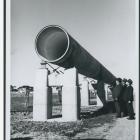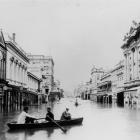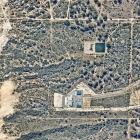Sydney: Dam Water, Filth to the Ocean
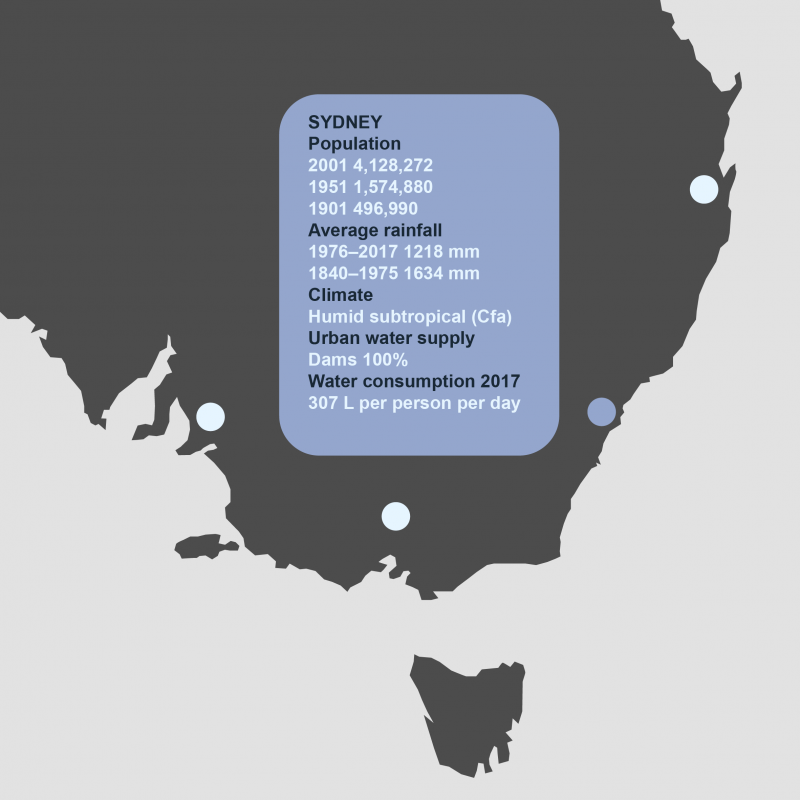
Map by Nathan Etherington.
 This work is licensed under a Creative Commons Attribution 4.0 International License.
This work is licensed under a Creative Commons Attribution 4.0 International License.
Although Sydney is a young city by world standards, rapid growth in the late nineteenth century saw its population rise to 500,000 by 1900, about the same size as Melbourne’s. These two cities were then among the twenty biggest in the world. Sydney has two characteristics not shared by any other Australian mainland capital: a huge deep harbor that could take a large volume of stormwater runoff and sewage, and forested catchments with valleys ideal for building dams. These natural features were exploited by the city’s water managers from an early stage as these sought to provide the city with plentiful water and cheap sanitation. Trying to manage demand, with few exceptions, has so far only been a response to acute crises.
Building Dams and Ocean Outfall Sewers
Sydney experimented with a sewage farm at Botany Bay in the 1880s, with tested effluent channeled into the Cooks River. However, rapid development in the eastern suburbs, based around the tramway system, saw an ocean outlet built in Bondi Beach, opening in 1889. The sewage farm was not expanded in step with the increasing volume of effluent from the southern suburbs, so closed in 1916. With the growth of population in the northern suburbs, fueled by the opening of the Harbour Bridge in 1932, another huge ocean outfall sewer, this time near Manly Beach, opened in 1933. For some decades sewage disposal was shielded from the public, as the ocean installations were embedded in sandstone cliffs, beyond public view. As more and more suburbs were sewered, the health risk created by night soil collection abated, although some suburban subdivisions from the 1950s were not sewered until the mid-1970s.
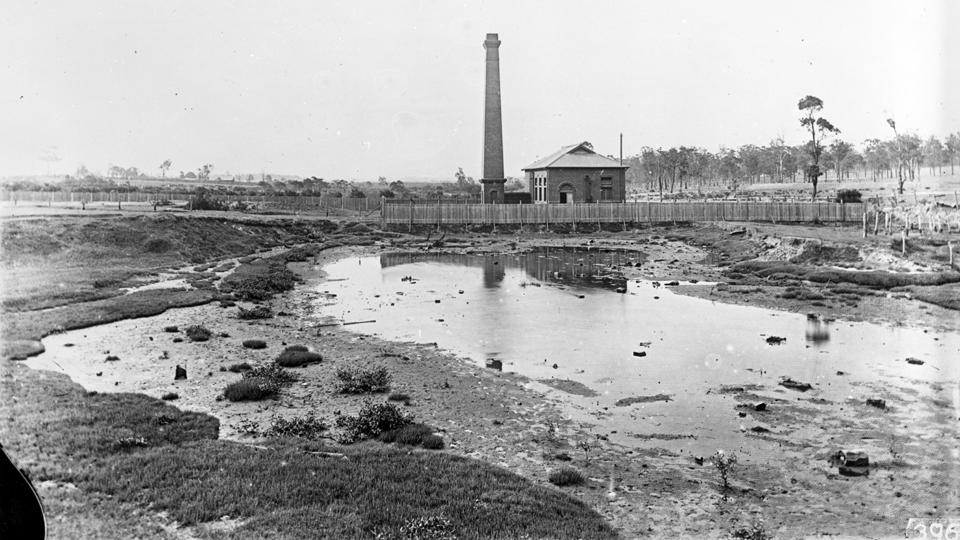
View of the pumping station and vent at the sewage farm in Botany. Unknown photographer, ca. 1900.
View of the pumping station and vent at the sewage farm in Botany. Unknown photographer, ca. 1900.
Botany Sewerage Farm, 1900? (City of Sydney Archives); 067261.
Accessed via the Dictionary of Sydney on 8 April 2019. Click here to view source.
 This work is licensed under a Creative Commons Public Domain Mark 1.0 License.
This work is licensed under a Creative Commons Public Domain Mark 1.0 License.
From the 1880s most of the city’s water supply came from relatively pristine river systems, especially the Nepean River, and water was pumped to large reservoirs for distribution to built-up areas. Beyond that many households had to rely on tank water. The great drought of 1901–2 required concerted action, not only to secure a safer water supply but a more guaranteed one. Dams were built to the south and west of the city center, with water pumped to reservoirs and water towers. Sydney’s hilly topography made it easy to choose sites for reinforced concrete water towers. Before the building of apartment blocks from the 1960s, these were a prominent feature in the urban landscape.
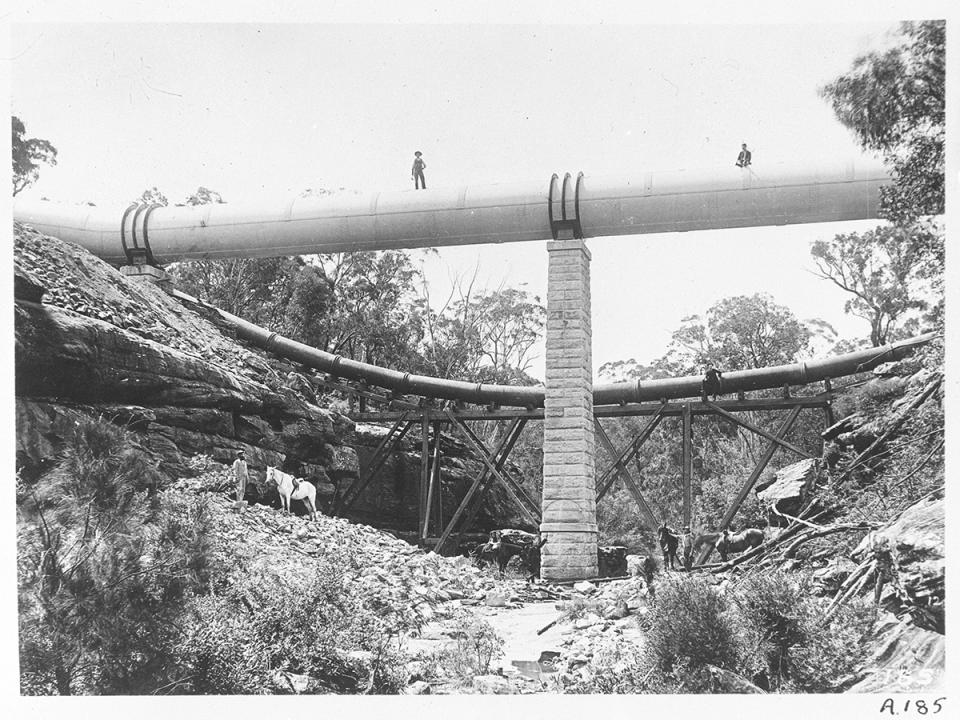
Temporary pipeline constructed to carry water to Sydney during the 1880s drought. Unknown photographer, ca. 1890.
Temporary pipeline constructed to carry water to Sydney during the 1880s drought. Unknown photographer, ca. 1890.
Courtesy of Sydney Water / WaterNSW6 Historical Research Archive.
 This work is licensed under a Creative Commons Public Domain Mark 1.0 License.
This work is licensed under a Creative Commons Public Domain Mark 1.0 License.
Five medium-size gravity dams were built between 1902 and 1941, their walls created out of local sandstone. The average rainfall across the five dams, 1.25 meters, meant that they rarely fell below 50 percent of their storage capacity. However, a drought in the mid-1930s rattled the government-owned Water Board and it embarked on an emergency scheme on the Warragamba River, proposing a huge dam that would flood an entire valley. So vast was the project that the potential storage capacity of the new dam, Australia’s largest, was almost four times the capacity of the previous five dams. However, the rainfall in the vast catchment to the west of the city was considerably less than that of the existing catchments, at just 0.81 of a meter.
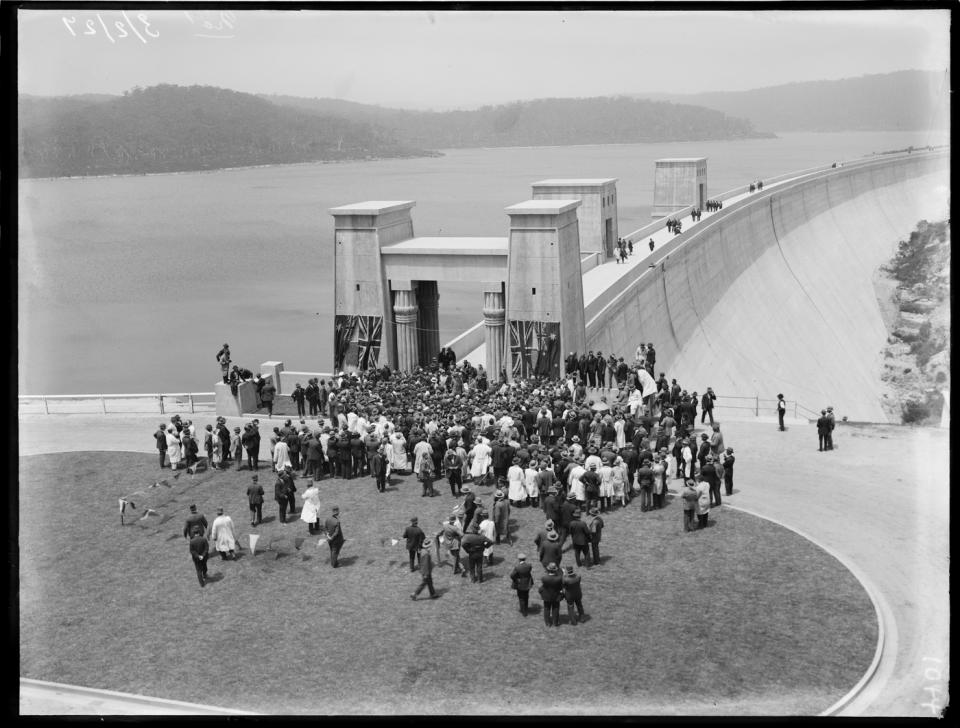
The official opening of the Cordeaux Dam in 1927 by Sir Dudley de Chair. Unknown photographer, 1927.
The official opening of the Cordeaux Dam in 1927 by Sir Dudley de Chair. Unknown photographer, 1927.
Courtesy of Mitchell Library, State Library of New South Wales, FL387028.
Box 76 No. 1044. Cordeaux Dam - Official opening Cordeaux Dam, Sir Dudley de Chair, 1927.
 This work is licensed under a Creative Commons Public Domain Mark 1.0 License.
This work is licensed under a Creative Commons Public Domain Mark 1.0 License.
Warragamba Dam, which took its name from two Indigenous words, warra and gamber, meaning “water running over rocks,” had been the traditional home of the Gundungurra clans. But, as with other clans, many died from European-introduced illnesses. After their lands were appropriated by colonizing farmers in the last decades of the nineteenth century, the remaining members of the clan were moved to the La Perouse settlement, not far from the Botany sewage farm.
When the dam opened in 1960, the official government booklet observed:
The building of the Warragamba Dam resulted in the flooding of the Burragorang Valley, drowning what was once the secluded haunt of aborigines and, later, a fertile farming district and popular holiday resort. The settlers have gone: the farms, guesthouses and the little schools and churches have been demolished; and water many feet deep covers the ground where they once stood. These things were inevitable in the cause of progress.
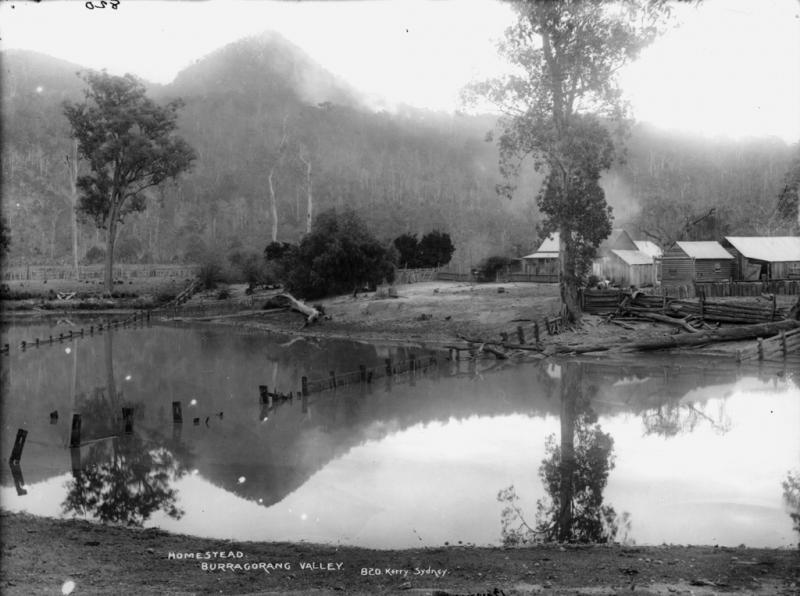
Photograph depicting the Burragorang Valley around the turn of the twentieth century. The valley would be flooded with the construction of the Warragamba Dam. Unknown photographer, ca. 1900.
Photograph depicting the Burragorang Valley around the turn of the twentieth century. The valley would be flooded with the construction of the Warragamba Dam. Unknown photographer, ca. 1900.
Courtesy of Powerhouse Museum, Tyrrell Photographic Collection. Gift of Australian Consolidated Press under the Taxation Incentives for the Arts Scheme, 1985.
Accessed via Flickr on 29 May 2019. Click here to view source.
 This work is licensed under a Creative Commons Public Domain Mark 1.0 License.
This work is licensed under a Creative Commons Public Domain Mark 1.0 License.
The dam, with a surface area of 75 square kilometers, could, according to the government, be relied on to supply the growing metropolis on “even the hottest of summer days.” A vast public display facility enabled children on school excursions and family groups on weekend picnics to admire the dam wall. Such grand public works were promoted as vital to the city’s future.
So Sydney looked set to cope with increased population and a commensurate increase in water use by both industry and residents. From the 1980s, residents and businesses faced higher charges for excessive water use. Those charges and occasional water restrictions in summer kept demand in check.
The next major crisis came not from supply, but from pollution. By the early 1980s the ocean outfall sewers were polluting two of Sydney and Australia’s most famous beaches, Bondi and Manly. The smell and the cloudy water could no longer be ignored. Few things bother Australian surfers more than dirty water and a polluted beach. Long extensions were built for the ocean outfall sewer pipes, and more elaborate systems were put in place to treat sewage before release into the ocean. It is much harder to treat stormwater runoff into Sydney Harbour and the ocean because there are hundreds of outlets, not just a handful of sewage treatment plants that can be easily monitored. So, as with cities around the world, an ongoing campaign to convince property owners not to place dangerous chemicals in public drains has had some success in raising consciousness about our collective responsibility to make sure that only rainwater ends up in stormwater drains. Some industries, including paint and gas manufacturers, had to be fined before they would embrace corporate responsibility.
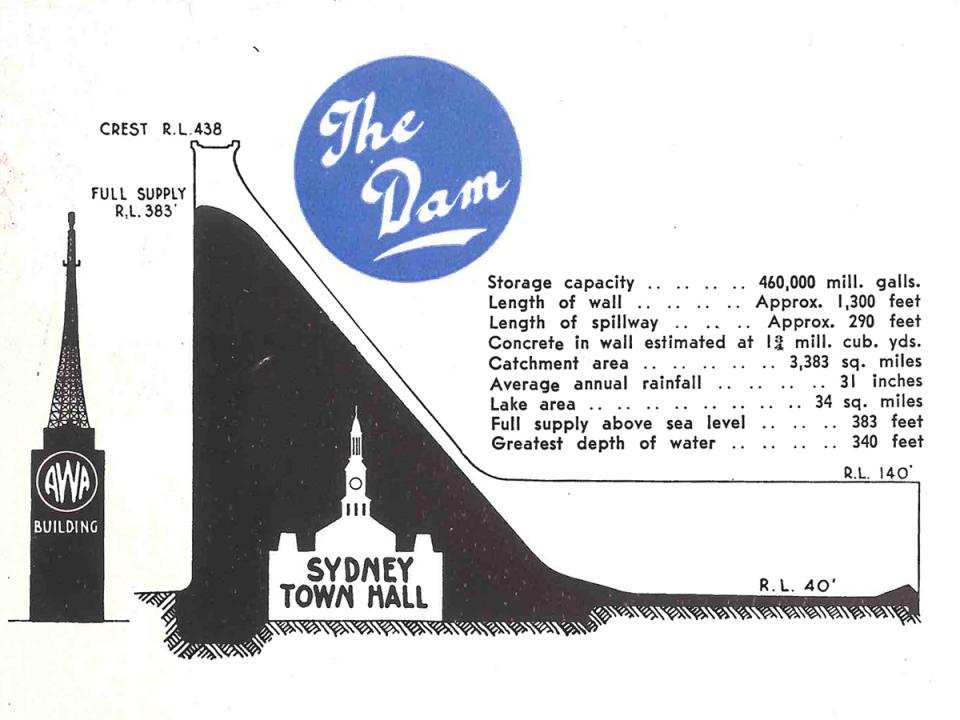
Diagram depicting the scale of the Warragamba Dam in relation to Sydney Town Hall and the AWA Building. Unknown illustrator, 1950.
Diagram depicting the scale of the Warragamba Dam in relation to Sydney Town Hall and the AWA Building. Unknown illustrator, 1950.
Courtesy of Mitchell Library, State Library of New South Wales.
 This work is licensed under a Creative Commons Public Domain Mark 1.0 License.
This work is licensed under a Creative Commons Public Domain Mark 1.0 License.
Dam Water, Manufactured Water
A severe drought from 2005 caught the state government off guard, especially when the level of the Warragamba Dam fell to 32.5 percent in February 2007, the middle of summer, when many households water their gardens frequently. Severe water restrictions succeeded in driving per capita consumption down from 300 liters per person per day to 230 liters—a poor effort compared to Brisbane, where in an even more severe crisis consumption was reduced down to 112 liters per person per day. Brisbane does have a higher rainfall than Sydney, and a higher proportion of houses with water tanks, mostly used for garden purposes. Sydney not only introduced mandatory water tanks for new dwellings, but has also maintained that requirement, abandoned in all other capital cities save Adelaide.
In a knee-jerk reaction the State Government, following the example of Perth (which has half Sydney’s average annual rainfall) and Brisbane, worked with a private consortium to build a saltwater desalination plant at Kurnell, abutting the Pacific Ocean, just near Sydney’s main airport. At an original capital cost of two billion dollars, it could theoretically produce up to 15 percent of Sydney’s annual demand for water. But in the year it opened, 2010, Sydney’s rainfall reverted to a more usual pattern; Warragamba Dam was not only full but overflowing by March 2012. The mothballed plant, now bizarrely half owned by the Ontario Teachers’ Pension Fund, has become a giant white elephant, costing the government twenty million dollars per annum even when it is not operating, because of the contract it has with the private owners.
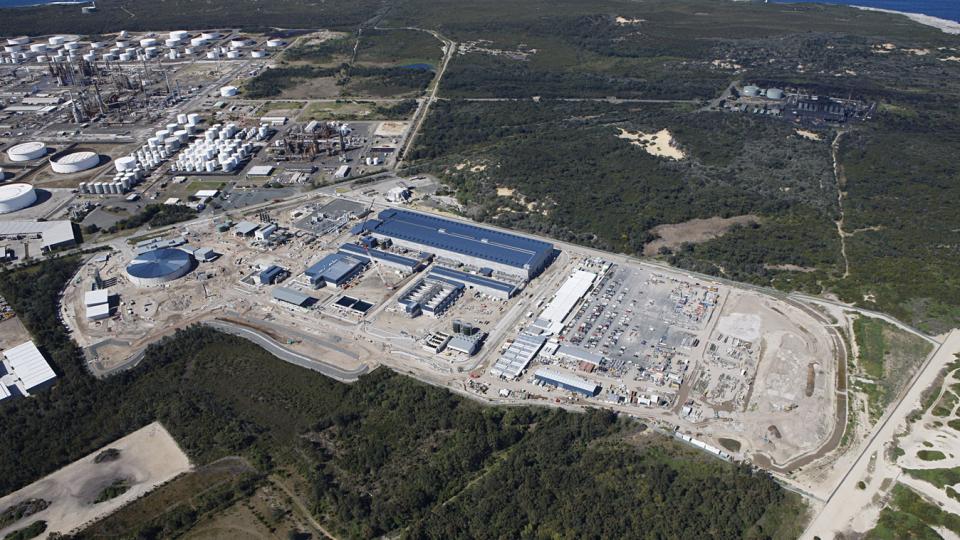
The Sydney desalination plant was constructed between 2007 and 2010. Photograph by Sydney Water, ca. 2009.
The Sydney desalination plant was constructed between 2007 and 2010. Photograph by Sydney Water, ca. 2009.
© Sydney Water.
Used by permission.
The copyright holder reserves, or holds for their own use, all the rights provided by copyright law, such as distribution, performance, and creation of derivative works.
The experience of the great urban drought in Australia earlier this century shows that householders, with restraint, can drastically reduce their annual daily water consumption. However privately and publicly owned water authorities want residents and businesses to be profligate with water when the dams are over two thirds full, because their income is based on encouraging use. In Sydney, when dam levels fall below 60 percent, the government requests the desalination plant to be activated, not least in order to justify the excessive expenditure on the plant in the first place. Even more embarrassing for the government is the high annual transfer of funds to the private owners of the plant, whose only interest is profit. The Ontario Teachers’ Pension Fund continues to hope for another great urban drought.















